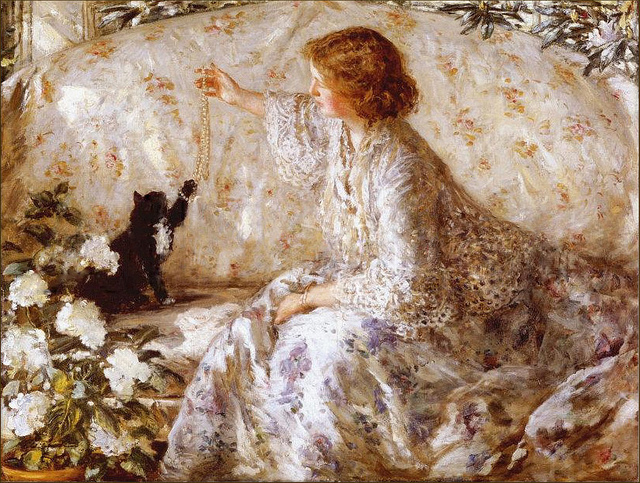
Philip Wilson Steer (1860–1942) was a prominent English artist, celebrated for his contributions to the Impressionist movement and his influential role in the British art scene during the late 19th and early 20th centuries. Born on December 28, 1860, in Birkenhead, Cheshire, England, Steer demonstrated an early passion for art, which would later blossom into a prolific and distinguished career.
Early Life and Education:
Philip Wilson Steer was the son of a portrait painter, and his early exposure to the world of art played a pivotal role in shaping his creative inclinations. He began his formal art education at the Gloucester School of Art, where he studied from 1876 to 1878. Steer’s talent was evident even in these formative years, and his dedication to his craft prompted his parents to support his ambitions.
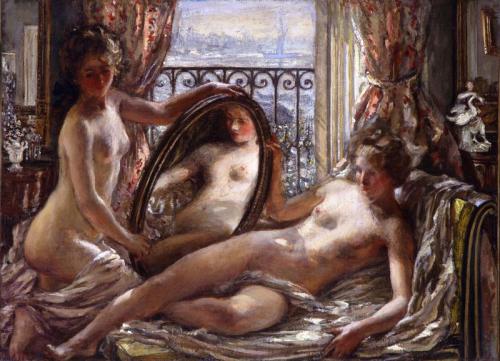
In 1880, Steer enrolled at the South Kensington Schools in London, a renowned institution that laid the foundation for many successful artists of his time. During this period, he studied under the guidance of acclaimed artists such as Frederic Leighton and John Sparkes, honing his technical skills and developing a deep appreciation for traditional art.
Early Career:
Steer’s early career was marked by a series of significant events that showcased his growing proficiency and commitment to art. In 1883, he made his debut at the Royal Academy, a prestigious platform for British artists. His works were well-received, establishing Steer as a promising young painter. His early style exhibited influences of academic art, demonstrating a mastery of classical techniques.
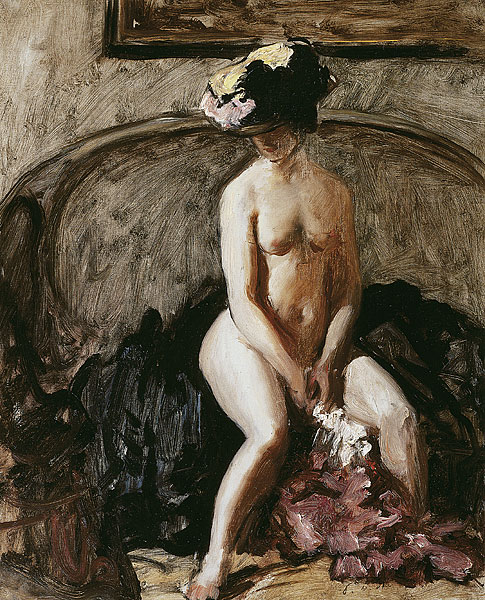
As the decade progressed, Steer’s artistic philosophy began to shift. Influenced by the works of French Impressionists like Claude Monet and Pierre-Auguste Renoir, he embraced the principles of this revolutionary movement characterized by its emphasis on capturing the effects of light and color in the immediacy of the moment.
Impressionist Influences:
In 1887, Philip Wilson Steer visited Paris, a pivotal experience that exposed him to the vibrant artistic milieu of the French capital. The encounter with the French Impressionist works left an indelible mark on him, influencing his approach towards painting. Inspired by the free brushwork and luminosity of the Impressionists, Steer gradually moved away from the rigid conventions of academic art.
The New English Art Club:
Upon his return to England, Steer played a crucial role in the establishment of the New English Art Club (NEAC) in 1886. This group, founded as a reaction against the conservatism of the Royal Academy, provided a platform for artists to exhibit their works free from the constraints of academic tradition. Steer’s involvement in the NEAC reflected his commitment to fostering a more progressive and open-minded artistic community.
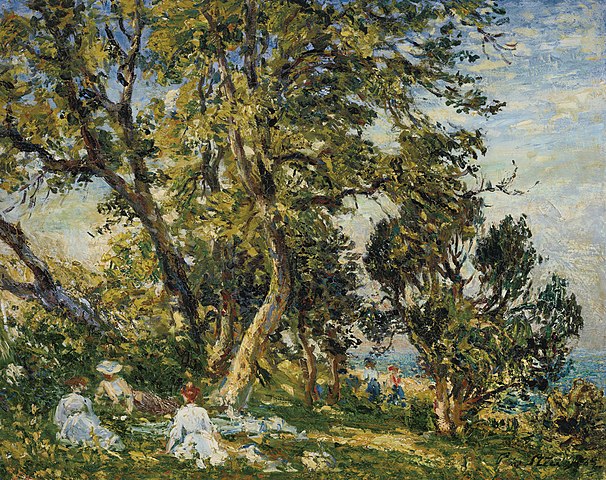
Throughout the 1890s, Steer’s style continued to evolve, embracing the tenets of Impressionism more wholeheartedly. His landscapes, portraits, and coastal scenes began to reflect a lighter palette, loose brushstrokes, and a keen sensitivity to the effects of light. Notable works from this period include “The Bridge at Rye” (1889) and “The Beach at Walberswick” (1890), which exemplify his growing mastery of Impressionist techniques.
The Camden Town Group:
In the early 20th century, Steer became associated with the Camden Town Group, a collection of artists known for their focus on urban scenes and modern life. Although Steer’s work did not align entirely with the urban realism of the group, his association with artists like Walter Sickert and Harold Gilman demonstrated his versatility and willingness to engage with various artistic movements.
As World War I unfolded, Steer’s artistic output continued, demonstrating his resilience and dedication to his craft. In 1915, he was appointed an Official War Artist, producing works that depicted the effects of the war on the home front. Despite the challenging subject matter, Steer’s ability to convey the emotional impact of the war through his art highlighted his enduring skill and adaptability.
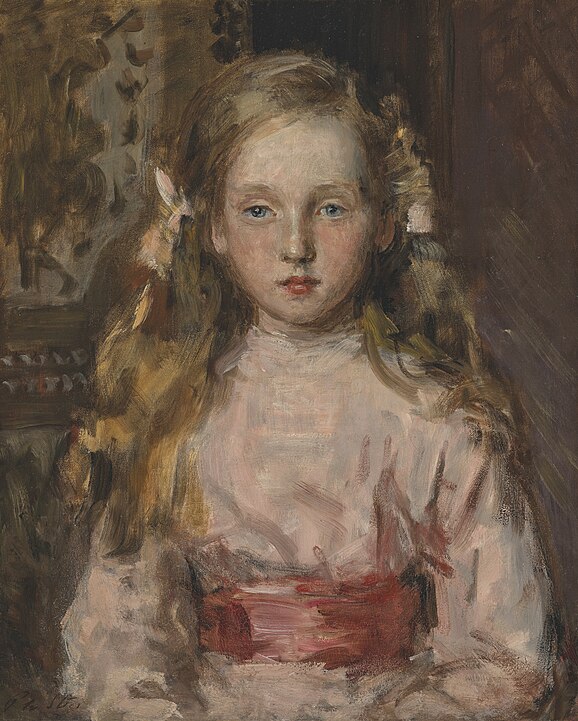
In the post-war period, Steer received numerous accolades and honors for his contributions to the art world. He was knighted in 1942, a recognition of his substantial impact on the British art scene over several decades.
Legacy:
Philip Wilson Steer’s legacy lies in his ability to navigate the shifting currents of the art world during a dynamic period in history. His journey from traditional academic training to embracing the revolutionary spirit of Impressionism reflected not only personal growth but also a broader evolution within the art community. Steer’s role in establishing the New English Art Club and his association with various art movements illustrated his commitment to fostering innovation and artistic freedom.
The artist’s works are housed in prestigious institutions, including the Tate Gallery and the National Portrait Gallery in London. Steer’s impact is also evident in the continued appreciation for his contributions to British art history, with scholars and art enthusiasts recognizing his role in bridging the gap between academic traditions and avant-garde movements.
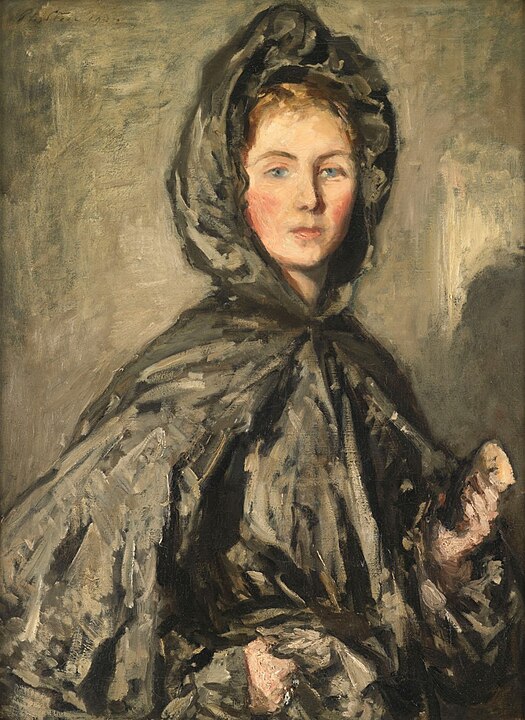
Philip Wilson Steer passed away on March 18, 1942, leaving behind a rich and varied body of work that continues to captivate audiences and inspire aspiring artists. His legacy endures as a testament to the transformative power of art and the ability of artists to adapt and innovate in the face of changing artistic landscapes.






